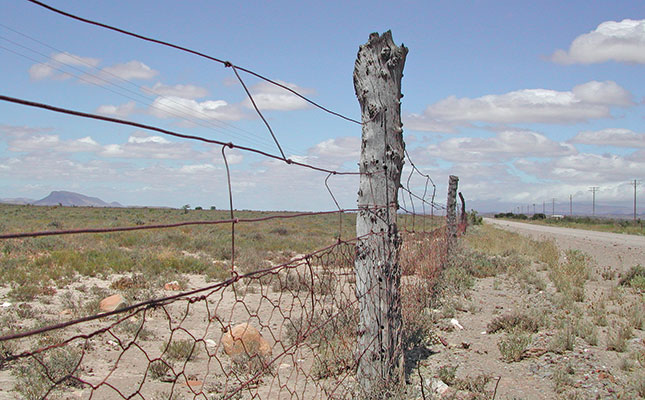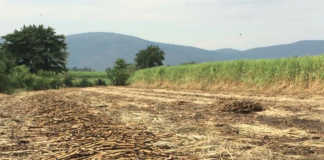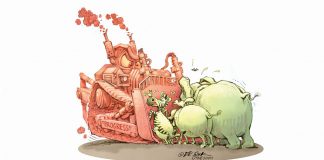
Photo: Roelof Bezuidenhout
Getting a livestock farm’s grazing capacity right is difficult, as the condition of the veld can vary considerably from season to season and year to year, depending on rainfall.
Dry conditions often compel farmers to destock, whereas above-average rainfall can entice them to increase the stocking rate.
Unless they change to a high-density, quick-rotation grazing system and operate according to different rules, most farmers use the stocking rate recommended by the department of agriculture for their specific district. This is based on rainfall, as well as the grazing value of the most common forage plant species found in the veld.
In very dry areas, the stocking rate could be as light as one large stock unit (1 LSU) per 30ha, which means that you could run one head of cattle weighing 450kg on 30ha of the farm’s grazing. With small stock units (SSUs), the equivalent would be about 10 sheep or goats, each weighing 45kg, on the same land area.
A higher rainfall area would have a higher carrying capacity and could therefore have a heavier stocking rate.
While rainfall is usually the chief determinant of grazing capacity, different camps
(even on the same farm) can carry different numbers of animals, depending on veld type and condition.
Veld type will also dictate what type of livestock (species and/or breed) or combination of animals would do best on the farm.
Cattle thrive on broad-leaf grasses; sheep prefer shorter grass or mixed grass and shrub veld; and goats browse shrubs and trees most effectively.
Achieving a balance
The ideal is to strike a balance between the needs of your livestock and the needs of the forage plants in the veld. Running too many animals (overstocking) eventually degrades the vegetation and soil, reducing production and reproduction in the flock or herd.
Wise veld management helps ensure that your livestock has enough forage of sufficient nutritional value throughout the year.
Whatever you do, long dry spells or winter conditions are sure to make some form of supplementary feeding necessary at one time or another. Remember that an animal consumes anything from 2% to 4% of its body weight per day, which is much more than you might think.
Experience
With years of experience, you can establish the best stocking rates for your farm or communal grazing area through trial and error. As a beginner, however, it is better to be conservative, as the damage caused by overstocking can take a generation or more to fix.
It is also a good idea to start the year with fewer animals and increase the number to full capacity as the lambing or calving season progresses.
If you are unsure of the best stocking rate for your farm or communal stocking area, ask an expert or a successful neighbour to have a good look at your veld and give an honest, objective opinion on its condition and grazing potential.
This person will look at factors such as the ratio of palatable plants to unpalatable or unwanted plants, the density of plant cover, the percentage of bare patches, erosion, and other signs of degradation. These are likely to vary from camp to camp.
The area near the homestead, for example, is typically more severely grazed than the outlying camps.
Find out if you have enough camps to implement a grazing system, where to build more camps, if necessary, and how large they should be.
Fencing
Farms often have too few camps. This problem is not easily solved, due to today’s astronomical cost of fencing material (anything up to R30 000/km).
Once fenced, each camp must have at least one stock watering point, adding to the cost. However, you should avoid setting up camps near water courses, mountain veld or any other ecologically sensitive areas of the farm.
A sound veld management system requires a minimum number of well-fenced camps or paddocks. This will enable sections of the veld enough time to recover after each grazing session.
Animal movement can also be controlled by electric fencing and herding, but these methods are expensive. It’s a sure bet, though, that virtual fencing or individual animal control will become more cost effective in the future. This could well render traditional fencing obsolete, enabling precision livestock farming even in an extensive region.
If cash flow is a problem, fence the farm over a number of years and write off the cost as you go along.











